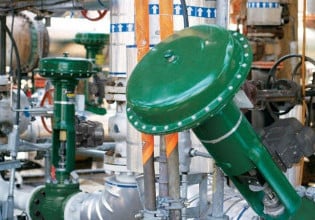Researchers at the University of Illinois at Urbana-Champaign have developed a membraneless alkaline fuel cell that can operate without a solid membrane separating fuel and oxidant, and which functions with alkaline chemistry in addition to the more common acidic chemistry. The fuel cell has been built by exploiting the way liquids do not mix in ultra-narrow channels. It could offer cheaper and more efficient fuel cells.
Doing away with membranes not only simplifies a fuel cell's design, but it has also enabled the first alkaline fuel cells to be built. These could potentially be 40% more efficient than the acidic units used now. The new system exploits a phenomenon known as "laminar flow," where tiny streams of liquid become so viscous they do not mix when squeezed past one another.
The cell is a cuboid of 3 cm x 1 mm x 1 mm, and produces 0.25 W of power. It has already been used it to power a miniature fan in the lab, but to power laptops or battery chargers in future, hundreds of tiny cells would have to be arranged in parallel. The chambers of the fuel cell have been reduced to about 0.25 mm so that the liquids were always moving, and that the two could flow past each other and would not mix, even without separating a membrane. They still allow the diffusion of protons or hydroxide ions from one side of the cell to the other.






